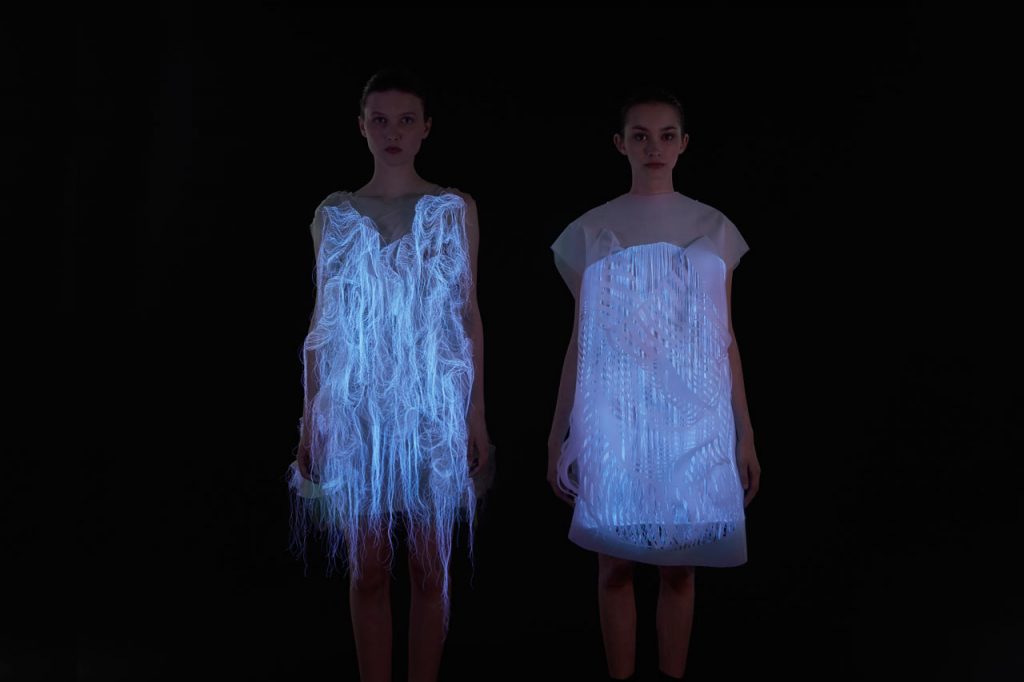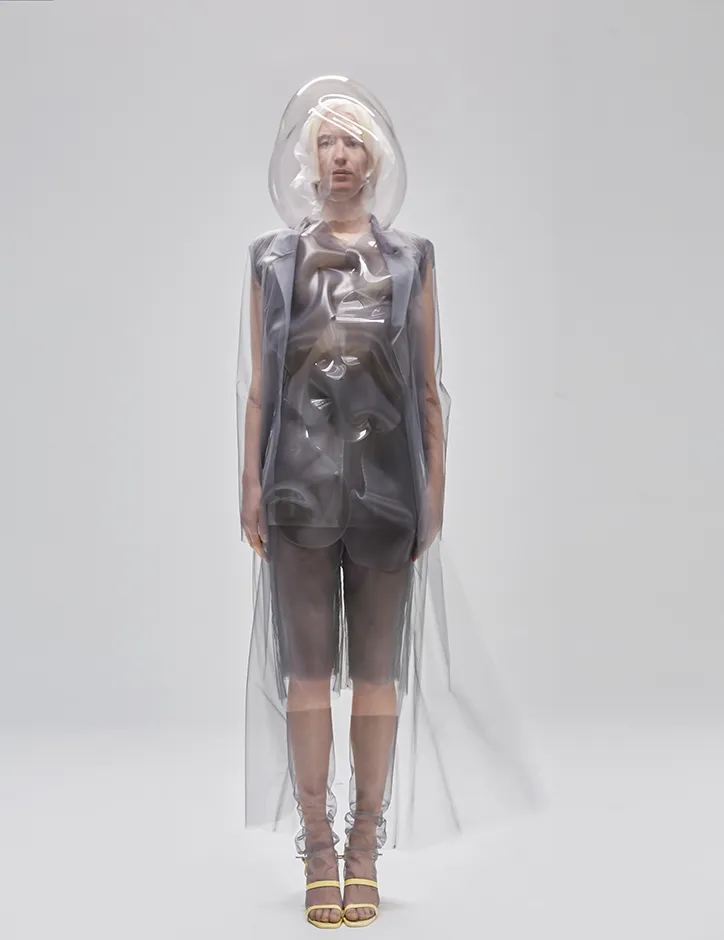- À New Wave to Fashion, À New Way of Living. Download Now on iOS Android Canada SS22
- hello@alahausse.ca
Smart Clothing: The Future of Fashion is Here

The Coevolution of Digital Design, Creativity, and Fashion
February 24, 2022
A Star-Studded CFDA Awards
November 23, 2022
Written by: Dylan Stoll
Everything seems to be getting smart these days. We have smart T.V’s, smart refrigerators, smart ovens, smart homes, even our clothing is getting smart. Though the concept of smart materials is over 60 years old, we’ve seen remarkable progress in the way electronics are integrated into our clothing. During the 90’s when smart clothing first became more accessible to the public, they were used mainly to charge your phone or play your music. Soon thereafter, printed circuit boards and other electronic devices were attached to the surface of clothing fabrics, unlocking greater potential in their creative expression. Some digitized sweaters, for example, could play a video, or a string of colorful words; they were fun and new, but today’s technological apparel achievements are where the real excitement lies.
The Future is Here
Today, we are seeing smart clothing that boggles the mind. E-yarn, described as an electrical version of yarn, is one such advancement. In a feat of technological innovation that even the prophets of science fiction couldn’t come up with, researchers at Nottingham Trent University took miniscule electronic components and entwined them with actual fabric threads, creating an “E-yarn” of varying thicknesses depending on it’s application. Weaving clothing with E-yarn, one could hypothetically build any number of electronic devices, even a computer.
Others are introducing the smart apparel industry to the health sector, developing smart clothing items that monitor temperature, heart rate, and other necessary medical information. If a patient were to wear a smart gown, for instance, all the complicated machinery of a hospital room could be removed, providing not only a more inviting atmosphere for the patient, but leaving them more accessible to doctors as well. Some possible real-world applications being developed are a bioimpedance vest to measure water accumulating in lungs, a chest belt to provide a topographical picture of the lungs to assess lung performance, and a light-therapy blanket for babies with jaundice, allowing their parents the ability to hold them without causing damage.

How Does it Work?

Now, you’re probably wondering how smart clothing works without a battery. Currently, most smart clothing items are connected to an external power supply of some sort, or a battery pack. As for the near-future, things are going to become much smaller, and much more discreet. In a research paper published on Science Advances, engineers developed incredibly small batteries known as fiber batteries. As elastic as human skin and chargeable wirelessly via a phone or other power supply, fiber batteries have essentially made truly discreet smart clothing possible, as they can be woven into the fabric itself. And with Nikola Tesla’s dream of unlimited access to free energy made a reality, your favorite smart clothing accessory will always be charged. In another paper published by Nano Energy, researchers even managed to make their smart apparel capable of charging themselves via wifi and radio waves in the environment.

Electrifying Potential
There is no doubt that the advent of smart clothing brings with it a whole assortment of useful, futuristic items for us to enjoy, but there are some issues that come with them, namely those centered around safety. If you are wearing smart clothing it is likely using electricity in some manner; this would mean that you are technically open to electrocution should the smart clothing fail. Manisha Mohan, an aeronautical engineering student at SRM University in the Indian city of Chennai discussed her smart clothing invention with BBC, a bra that electrocutes potential assailants. Though the bra is obviously a fantastic deterrent to assaults, and it’s creator assures BBC that it is entirely safe to use; if it is capable of electrocuting others, it is likely capable of electrocuting you in the case of a failure. Can you truly be certain that such a device would never malfunction?
The Bottom Line
Smart technologies promise great rewards, total comfortability, and plenty of style, with little effort required in return. As great as this convenience is, it is important to remember that as the technologies we use collect more and more of our information, being aware of the possible dangers of our smart devices will become more and more a necessity. The future of smart clothing does intrigue us at ÀLA.HAUSSE (In fact, I may buy one myself!) but personal safety, as well as data safety, is still a priority. Before you buy your next smart clothing item, see if it has defensive measures against possible intrusions.

À New Wave to Fashion. À New Way of Living.
Your First and Last Sustainable AI and Social Powered P2P/B2C Multifunctional Ecosystem (BUY/SELL/RENT/LEND/ SWAP/GIFT), for Me and You.
Apple: https://apple.co/3F8EgcJ
Android: https://bit.ly/3f7jEY3
Via ÀLA.HAUSSE’s Multi-functional and Multi-purposeful Fashion Ecosystem- BUY/SELL/RENT/LEND mobile application, INDIVIDUALS & brands ( BETA) are encouraged to REBUY, RESELL, REUSE and UP-CYCLE their personal “Clossets” aka Clothing Assets. Through this consumerism habit shift we slow down the urgency on fashion carbon footprint, aiding sustainability as a whole.
Launching NOW on iOS Android Canada
Give me a read: shorturl.at/rIMT8
More stories on www.alahausse.ca, Medium & Hackernoon. Follow & Tag @ala.hausse
#ALAHAUSSE #WEARYOURPURPOSE #HAUSSEPEOPLE
References:
- https://www.sciencedirect.com/topics/materials-science/smart-textiles#:~:text=The%20discovery%20of%20shape%20memory,materials%20were%20introduced%20in%20textiles.
- https://www.electronicspoint.com/research/the-development-of-e-yarns-paves-the-way-for-a-new-class-of-wearables/
- https://www.mouser.ca/applications/healthcare-may-reside-in-smart-clothing/
- https://www.science.org/doi/10.1126/sciadv.abl3742
- https://www.bbc.com/news/business-22110443
- https://www.newsweek.com/how-cyber-thieves-use-your-smart-fridge-door-your-data-1603488








